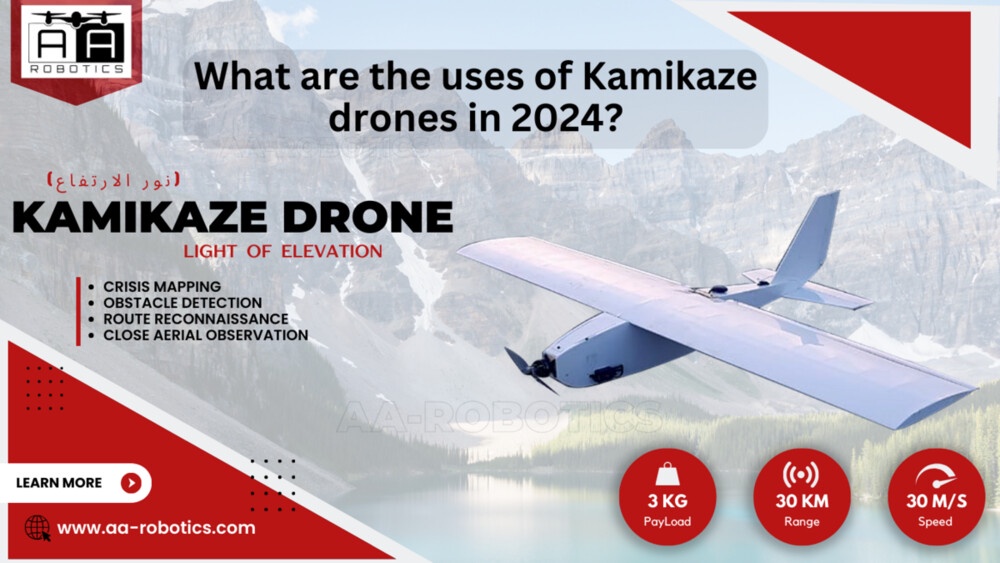The Rise of Kamikaze Drone
The rapid advancement of drone technology in recent years has had a profound impact on global defense strategies. One of the most concerning and disruptive developments in this space has been the emergence of so-called "kamikaze drone" - small, expendable unmanned aerial vehicles (UAVs) that are designed to intentionally crash into targets and detonate an explosive warhead.
Defining Kamikaze Drones
These drones, also known as loitering munitions or suicide drones, represent a new and highly lethal class of weapon that is challenging conventional approaches to military defense. Unlike traditional drones that are used for reconnaissance, surveillance, and precision strikes, kamikaze fixed-wing drones are meant to serve as low-cost, one-way attack platforms. Their small size, low radar signature, and ability to loiter over a target area make them difficult to detect and intercept using traditional air defense systems.
Recent Battlefield Successes
The proliferation of kamikaze drone technology has been driven in part by the successes seen on the battlefield in recent conflicts. In the 2020 Nagorno-Karabakh war between Armenia and Azerbaijan, Azerbaijan's use of Israeli-made Harop and Harpy loitering munitions was credited with helping tip the balance of power and secure their victory. Similarly, Iran-backed Houthi rebels in Yemen have used low-cost unmanned aerial vehicle drones like the Qasef-2K to target Saudi Arabian oil facilities and other critical infrastructure with relative impunity.
Concerns and Implications
These developments have set off alarm bells among military strategists and defense officials around the world, who are grappling with how to effectively counter this new and asymmetric threat. The implications of kamikaze drone proliferation are far-reaching, with the potential to undermine traditional air superiority, compromise valuable military assets, and empower non-state actors to inflict significant damage.
Ease of Acquisition and Deployment
One of the primary concerns is the ease with which these drones can be acquired and deployed. In contrast to the high costs and lengthy development timelines associated with traditional combat aircraft and missiles, These drones can be manufactured relatively cheaply using commercial off-the-shelf components. This lowers the barriers to entry for both state and non-state actors to acquire and utilize these weapons.
Challenges in Countering Kamikaze Drone
Moreover, the small size and versatility of kamikaze fixed-wing drones make them difficult to detect and destroy using existing air defense systems. Their ability to fly at low altitudes, take evasive maneuvers, and potentially be equipped with electronic warfare capabilities to jam or spoof radar and other defensive systems poses significant challenges. The fact that they are expendable and intended for one-way missions also means that traditional deterrence strategies like mutually assured destruction may not be as effective.
Reshaping Strategic Calculus
The proliferation of kamikaze UAV drones also has the potential to reshape the strategic calculus of military engagements. The threat of these low-cost, high-impact weapons could compel adversaries to divert significant resources towards developing and deploying countermeasures, potentially altering the balance of power and shifting the focus away from other critical defense priorities.
Developing Countermeasures
In response to these emerging threats, militaries around the world are scrambling to develop new defensive capabilities and strategies. This includes investing in advanced sensors, electronic warfare systems, and directed energy weapons to detect, disrupt, and destroy kamikaze drones. Some nations are also exploring the use of swarming drones, anti-drone jammers, and even trained birds of prey to counter the unmanned aerial vehicle drone threat.
Challenges and Limitations of Countermeasures
However, these efforts come with their own set of challenges and limitations. Developing effective counter-drone systems is both technically complex and resource-intensive, requiring significant investments in research and development, procurement, and deployment. There are also concerns about the potential for escalation and unintended consequences, as the use of these defensive measures could be perceived as acts of aggression by adversaries.
Towards Drone Defense Ecosystems
Furthermore, the decentralized and asymmetric nature of the kamikaze drone threat means that traditional top-down, centralized defense strategies may not be sufficient. Instead, there is a growing recognition of the need for more agile, distributed, and collaborative approaches to counter this threat, involving not just military forces but also civilian law enforcement, critical infrastructure operators, and even the general public.
International Cooperation and Information-Sharing
Another key aspect of addressing the kamikaze fixed-wing drone challenge is the need for greater international cooperation and information-sharing. As these weapons become increasingly globalized, there is a growing recognition that no single nation or organization can effectively counter the threat on its own. Collaborative efforts to develop common standards, share intelligence, and coordinate joint defense strategies will be essential to mitigating the risks posed by kamikaze drones.
Ethical and Legal Considerations
At the same time, there is a pressing need to address the broader ethical and legal implications of this emerging technology. The use of kamikaze drone raises significant concerns about the principles of proportionality, discrimination, and military necessity under international humanitarian law. There are also questions about the potential for these weapons to be used in indiscriminate attacks against civilian populations, further blurring the lines between combatants and non-combatants.
Conclusion
In conclusion, the rise of kamikaze drones represents a significant and disruptive challenge to global defense strategies. Their proliferation has the potential to undermine traditional military advantages, empower non-state actors, and introduce new ethical and legal considerations to the realm of warfare. Addressing this threat will require a multifaceted approach that combines technological innovation, strategic collaboration, and a deep commitment to upholding the principles of international law and humanitarian protection. As the world enters a new era of asymmetric warfare, the ability to effectively counter the kamikaze uav drone threat will be a critical determinant of national security and global stability in the years to come.


No comments yet